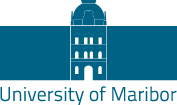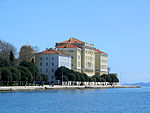
The University of Ljubljana, abbreviated UL, is the oldest and largest university in Slovenia. It has approximately 38,000 enrolled students. The university has 23 faculties and three art academies with approximately 4,000 teaching and research staff, assisted by approximately 2,000 technical and administrative staff. The University of Ljubljana offers programs in the humanities, sciences, and technology, as well as in medicine, dentistry, and veterinary science.

The University of Graz is a public research university located in Graz, Austria. It is the largest and oldest university in Styria, as well as the second-largest and second-oldest university in Austria.
The Jožef Stefan Institute is the largest research institute in Slovenia. The main research areas are physics, chemistry, molecular biology, biotechnology, information technologies, reactor physics, energy and environment. At the beginning of 2013 the institute had 962 employees, of whom 404 were PhD scientists.

Styria, also Slovenian Styria or Lower Styria, is a traditional region in northeastern Slovenia, comprising the southern third of the former Duchy of Styria. The population of Styria in its historical boundaries amounts to around 705,000 inhabitants, or 34.5% of the population of Slovenia. The largest city is Maribor.

Hacettepe University is a leading state university in Ankara, Turkey. It was established on 8 July 1967. It is ranked first among the Turkish universities by URAP in 2021.
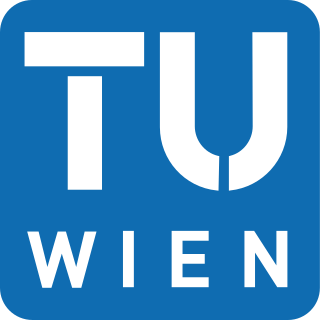
TU Wien, also known as the Vienna University of Technology, is a public research university in Vienna, Austria.

The Budapest University of Technology and Economics, official abbreviation BME, is a public research university located in Budapest, Hungary. It is the most significant university of technology in the country and is considered the world's oldest institute of technology which has university rank and structure. It was founded in 1782.

University of Primorska is a public university in Slovenia. It is located in Koper, Izola, and Portorož and is named for the Slovenian Littoral region, where it is located.

Radiotelevizija Slovenija – usually abbreviated to RTV Slovenija – is Slovenia's national public broadcasting organization.

Bežigrad Grammar School or Bežigrad Gymnasium is a selective coeducational state secondary school. It is named after the Bežigrad district in Ljubljana, Slovenia, where it is located.
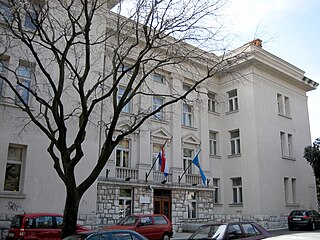
The University of Rijeka is in the city of Rijeka, Croatia, with faculties in cities throughout the regions of Primorje, Istria and Lika.

The Josip Juraj Strossmayer University of Osijek, commonly known as the University of Osijek (UNIOS), is a public university based in Osijek, Croatia. Established in 1975, it is the flagship institution of higher education in Slavonia, and one of the largest and oldest universities in Croatia.

The University of Banja Luka is the second-oldest university in Bosnia and Herzegovina. A public university, it is the flagship institution of higher education in Republika Srpska, one of two entities of Bosnia and Herzegovina. As of 2018–19 school year, there are 11,186 enrolled students.
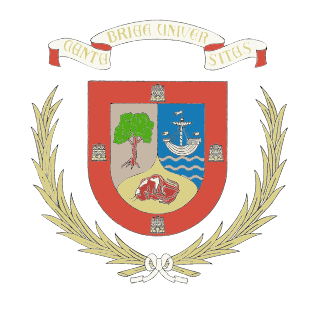
University of Cantabria (UC), is a public university located in Santander, Torrelavega and Comillas in Cantabria, Spain. It was founded in 1972 and is organized in 15 schools and colleges.
The Croats are an ethnic group in Slovenia. In the 2002 census 35,642 citizens of Slovenia identified themselves as Croats, making them second most-populous non-Slovene ethnic group in Slovenia. Despite their centuries-old presence, Croats do not have the status of a national minority.
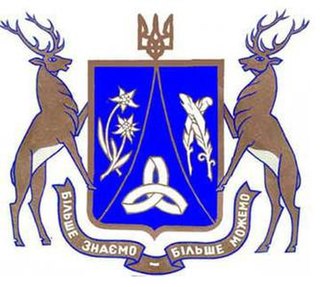
Uzhhorod National University is a Ukrainian state higher educational institution in the city of Uzhhorod in Ukraine.

Feri Horvat was a Slovenian manager and politician, and one of the founders of the United List of Social Democrats, now known as the Social Democrats. Between July and October 2004, he served as speaker of the Slovenian National Assembly.

Alma Mater Europaea – European Center Maribor is an accredited non-profit research university in Slovenia. It is part of an international university Alma Mater Europaea of the European Academy of Sciences and Arts, which unites about 2000 leading scholars, 37 of which are Nobel Prize laureates. Alma Mater Europaea ECM offers doctoral, masters, and bachelor degree studies in Humanities, Social Gerontology, Ecology, Business, Web and Information technologies, Applied Artificial Intelligence, Sustainable Development, European studies, Project Management as well as Social Studies, Healthcare, Nursing, and Physical therapy. Institutum Studiorum Humanitatis, the oldest Slovenian private higher education institution, joined Alma Mater in 2014. Since 2015, a Dance Academy, the only Slovenian accredited institution offering diplomas ballet and dance studies, is part of the Alma Mater.

Ludvik Toplak is a Slovenian law professor and academic administrator, and former politician, ambassador, and member of the Parliament. He is the rector of the Alma Mater Europaea university and former rector of the University of Maribor. He is a member of the European Academy of Sciences and Arts.

Alma Mater Europaea is an international university based in Salzburg, Austria, with campuses in several European cities. It has a status of a university in Slovenia.
